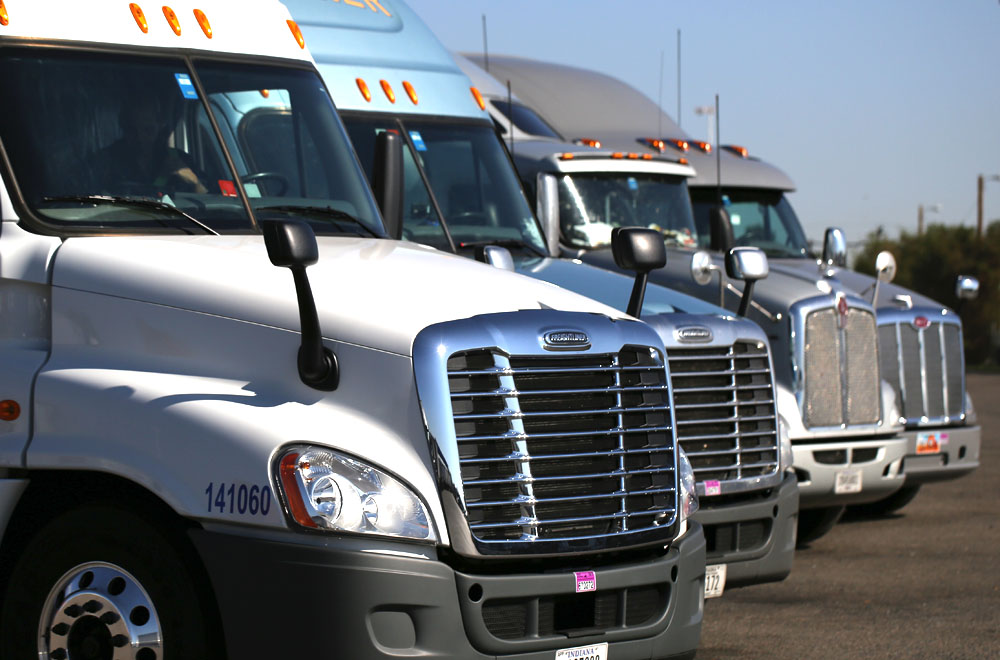Right now the cost of fuel is low, but it may not always be that way. While you cannot control the cost of fuel, you do have some control over the rate of consumption. Aside from purchasing fuel efficient tires and driving an aerodynamic truck, understand how simply changing your driving habits can greatly improve your fuel economy.
Sweet Spot
Think of yourself as the RPM manager of your business and know your truck’s RPM ‘sweet spot’ so you can get the best fuel economy. The ‘sweet spot’ is the engine speed measured in revolutions per minute (RPM) at which fuel consumption is at a minimum. Your owner’s manual should list the ideal range for your engine as every truck varies. Roughly at mid-range is the sweet spot, where you’ll get your best fuel economy. This is usually found somewhere between 1200-1400 RPM. High RPM is any number over 1500 RPM.

Running your engine in its sweet spot requires that you run at a constant, usually slower speed. The best way to do this is with cruise control. Keep in mind that external factors, such as your truck specs, service duty (dry van, car carrier, etc.) load weight and terrain will affect the sweet spot.
At speeds in excess of 60 mph, the fuel economy loss is almost always greater than any revenue you generate from saving time. Above 60 mph, each one mph increase in speed decreases fuel economy by one-tenth of a mile per gallon.
The key point to remember is that the lower the number of revolutions on your engine, the less fuel your engine will consume.
Acceleration & Braking
How you brake and accelerate also greatly affects your fuel mileage. Drive in a safe, deliberate manner and try to anticipate changes in traffic to keep your momentum up. When accelerating, don’t stomp on the pedal. Instead, gradually speed up. Use the throttle to slow down instead of braking and coast whenever possible. And don’t be a tailgater - follow at a safe distance so that you don’t have to brake frequently.
Progressive Shifting
It’s better to shift to the next highest gear while still at a low RPM, and not run up to high RPMs before every shift. Remember that the RPM will vary based upon the load on the truck, the engine, and the drive train setup. The key is to know your truck. When possible, use your truck’s friction and rolling resistance to let it gradually slow down instead of downshifting.
Idling
The average truck burns a half-gallon of fuel at 650 RPMs to one full gallon of fuel at 1,000 RPMs per hour of idling. Idling 8 hours a day can cost $200 a week, and increase maintenance costs. Many states, counties and cities have idling reduction laws with fines as high as $25,000. Aside from saving fuel, an unattended truck that is idling is also easier to steal and creates unnecessary security issues.
Here are just a few ways you can reduce idle time:
| Solution |
Cost |
Idle Hours Saved in a Year |
Idle Dollars Saved in a Year |
Payback Period |
| Electric Blanket |
$50 |
850 |
$3,000 |
5 days |
| Remote start with temperature sensor |
$500 |
750 |
$3,000 |
61 days |
| Auxiliary Heater/AC |
$1,500 |
1,000 |
$4,000 |
137 days |
| APU |
$9,000 |
1,400 |
$5,600 |
1/7 years |
Fuel Network/Optimizer
If you run for a company that provides a fuel optimizing software program… USE IT! This software can save you 5-20 cents per gallon when you refuel at an in-network truck stop. If you use approximately 16,500 gallons of fuel a year, ten cents or more savings per gallon will save you $1,650.
Most carriers provide you with a fuel card and automatically deduct fuel expenses from your settlement. This means it’s easier to manage fuel expenses and cash flow. Optimizers can also save you time and money with the following:
- Track how much you are spending on fuel
- Track your miles driven
- Develop your Quarterly Fuel Tax report easily
- Plan your lowest total net cost of fuel based on the route you are traveling
Out-of-Route Miles
Many truck drivers run out-of-route 6% to 12% of their total annual miles, such as for trips to the grocery store, meeting a buddy off-route, or driving to dealerships to find parts for your truck. These extra trips add up quickly. Try to manage your time wisely to minimize this extra fuel consumption, and run errands in your personal vehicle to avoid putting unnecessary miles on your truck.
Whether fuel prices are high or low, practicing these tips will help you become a smarter driver, while helping you save thousands of dollars every year.
This article was originally featured on ATBSshow.com.